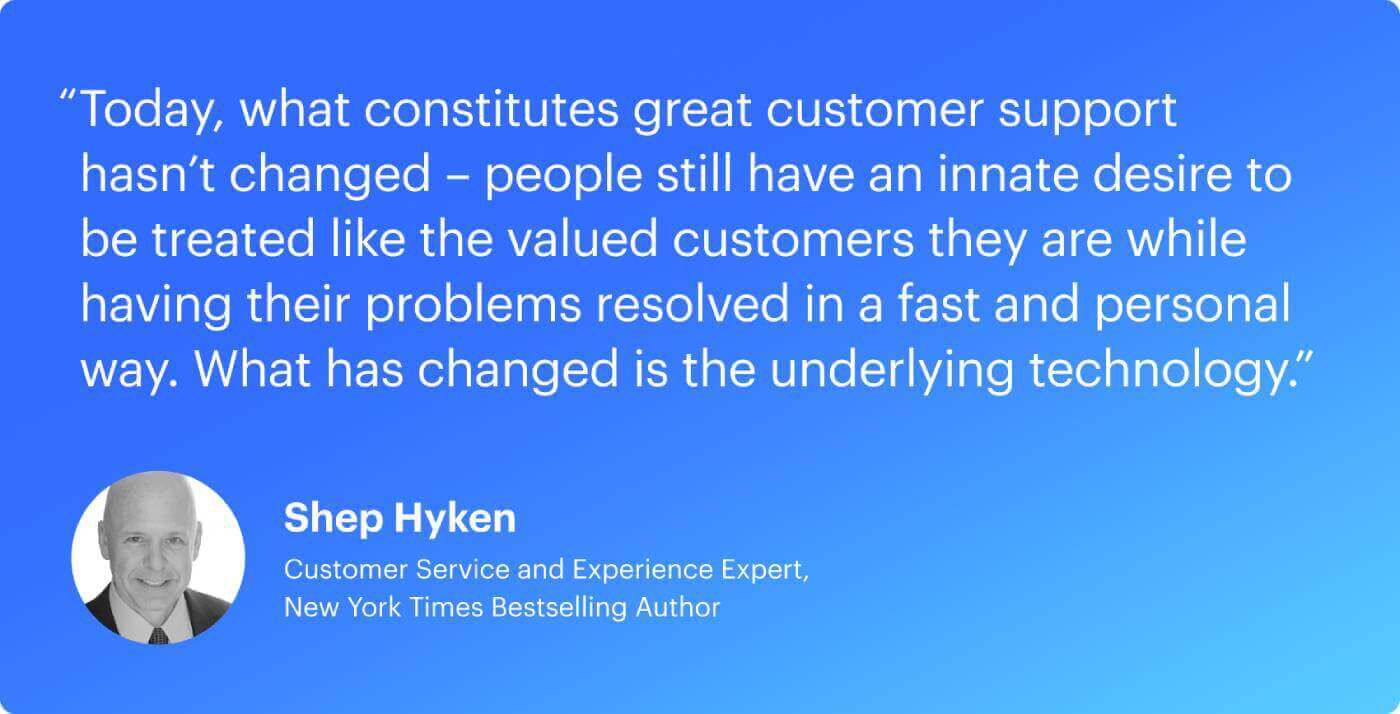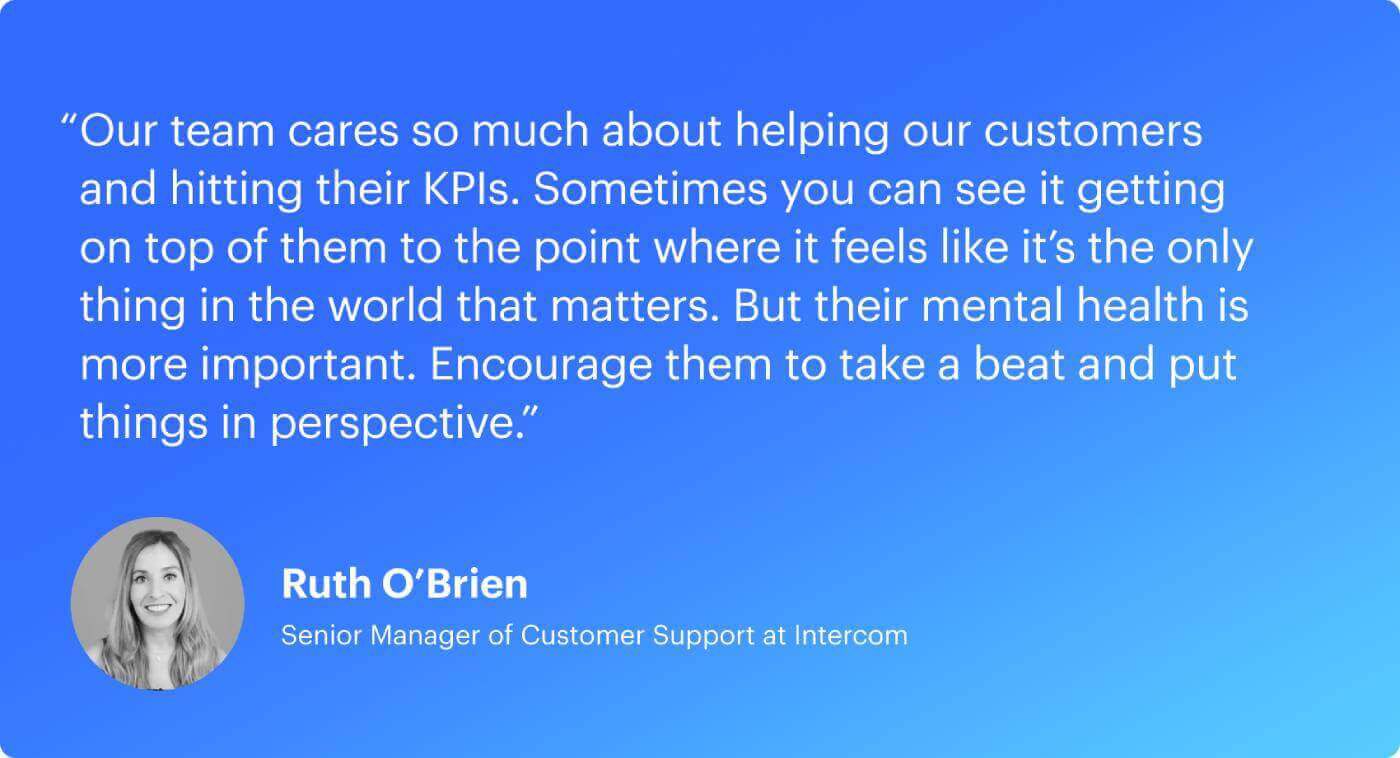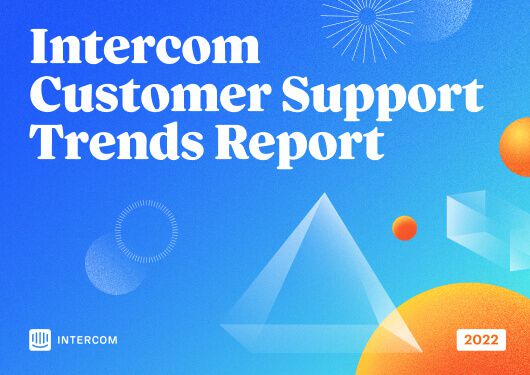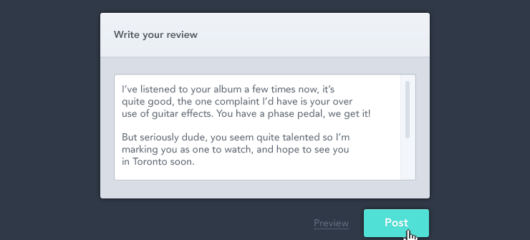
Customer Support: Bridge the expectation gap in 2022
The digital landscape has undergone major change since the arrival of COVID-19. As the masses migrated online, digital transformation has accelerated by roughly five years. With a new bar set for what is achievable digitally, customer expectations have grown in correlation – particularly when it comes to support, its availability, and the quality of the customer experience.
The customer expectation gap has been widely reported on in the years since the pandemic, but our latest Intercom Customer Support Trends Report for 2022 shows that that gap has expanded further than ever. Not only are support leaders seeing increased customer expectations (75%), even fewer teams are confident they can meet those expectations (34%) than before. The good news? Businesses who act fast can close the expectation gap. Here are five ways that you can get started.

1. Personalization is your first port of call
Personalization is the best place to start when it comes to meeting rising customer expectations, as the customer experience is now the most influential factor for customers when doing business online. As people become more digitally savvy (not to mention having been socially restricted), their desire for humanized online experiences have increased.
“80% of customers are more likely to do business with a company that offers personalized experiences”
People naturally gravitate towards others that make them feel safe and valued – the same thought process can be applied to customer support. From trust comes loyalty and this is more likely to form from personalized interactions than generic responses. In fact, 80% of customers are more likely to do business with a company that offers personalized experiences.
The great thing is, customers are willing to play their part in perfecting the process with 83% of consumers willing to share their data to create a more personalized experience.
Recognizing your customers by name should be customary – but recognizing their individual needs and wants is where your support can really stand out. We recommend making the effort to establish a personal tone without getting overly familiar – this way, you are set up for meaningful engagement that’s not overly intrusive. You don’t want to freak them out after all.
Support tools, like chatbots, can help you with your personalization strategy by automatically gathering rich context about each customer, such as their plan, transaction history, or previous queries. Having this data at your fingertips helps you and your team nail personalization and, ultimately, retain happy customers!
2. Empower your customers to self-serve
Support could be visualized as a dance between you and your customers. You both play a role in sharing information, but ultimately you are the one leading. Successful empowerment stems from laying all your knowledge on the table, in different formats, so that customers can pick and choose how to be helped. Every time a customer chooses to self-serve, your team is freed up to answer more complex queries. No wonder “proactively answering customers’ questions with FAQs” is a top priority for 42.5% of support teams in 2022.
Customers are used to living in an on-demand world and expectations around access to support have grown accordingly. But, rest assured that this doesn’t call for consistent hand-holding as study after study indicates customers would rather self-serve than talk to a support rep at all. However, less than a third of companies offer self-service options, such as a knowledge base, and are therefore neglecting empowering their customers.
We recommend planning out the different types of content customers need at each stage of their journey. For example:
- Getting started guides for the beginner.
- FAQs and how-to articles for the novice.
- Best practice guides and troubleshooting articles for the proficient.
Preparing an adequate knowledge base, help center, or blog with a clear navigation path is vital for empowerment. Using a modern support tool like a messenger to present these options at the “Chat with us” stage can really help users narrow down and simplify their search.
At Intercom, we use a framework called the Conversational Support Funnel to deliver efficient, personal support to our customers at scale. With the funnel, self-serve and proactive support resolve simple, frequent queries leaving only critical issues to reach your team.
“56% of support leaders consider ‘longer wait times’ to be the top way support reductions related to COVID-19 negatively impacted their customer experience”
3. Response time is of the essence
56% of support leaders consider “longer wait times” to be the top way support reductions related to COVID-19 negatively impacted their customer experience. Setting up automation to handle the frequent queries really respects your customers’ time and reduces queue times. But, it’s not just your customers who stand to gain from automation – McKinsey finds that its implementation in the customer experience can reduce cost-to-serve and boost conversion rates and growth. Therefore, it’s no surprise that 50% of support leaders plan to invest more in automation, including chatbots.
While the term “automation” may denote anything but personalization, its increase in functionality has sparked change in how customers actually view automation: less as a nuisance, and more as a legitimate personalized option for getting assistance. Your support team can balance personalized support and efficiency – a vital tightrope to walk amidst rising customer expectations.

4. Use feedback to keep up with rising expectations
At Intercom, we’re firm believers in the positive effect honest and open feedback has – not just on our product, but on the way we work and our overall success. After all, if you don’t know, you can’t grow.
Many companies have become accustomed to asking for feedback on the product or service they provide, but it’s also important to evaluate your customer support to identify gaps that need to be bridged. With 59% of organizations reporting increased inbound volume, gathering customer feedback will help you to find out and address rising expectations directly. This might sound like an extra load to the work you are hoping to minimize, but not to worry! We’ve outlined the ways you can collect and quickly implement customer feedback here.
This can be as simple as implementing a rating system, timely follow up messages, or even surveys to gather valuable qualitative data. For example, with Intercom, you can integrate apps, such as Typeform, to quickly gather key feedback from customers in the Intercom Messenger.
Not only can you identify expectations as they continue to change, but you can also use this information to motivate your team. Recognizing team successes and providing clear goals will result in a happier support team – which brings us neatly to our next point…
“64% of customer support leaders say members of their teams have felt ‘burned out’ in the past 12 months”
5. Value and invest in your team like you would customers
Great support leaders will already know the importance of taking care of your team, but many are only now contemplating the results of the “Great Resignation.” Unsurprisingly, two of the top three ways support leaders intend to meet customer expectations in 2022 include “hiring talented support reps” (a priority for 36% of support leaders) and “providing better training for existing employees” (a key goal for 46% of support leaders).
We’ve discussed the effect automation has on maximizing your team’s efficiency, but we recommend investing deeper into your team’s needs – both in a professional and personal sense.
Legacy support channels, such as email and phone, tend to be time-consuming and require a lot of team power. Therefore, it may be time to reassess the tools your team uses and perhaps ask yourself the following questions:
- Are these tools still relevant to our strategy?
- Could our processes be simplified with integrations?
- What issues are our team currently facing?
- Are there tools available to directly address these issues?
This is a good starting point to empower and upskill your team – aim to minimize any difficulties they may be having and look for ways they can get better satisfaction out of their work.
But it is not just the technical side of your team you should address. Support teams are trying to manage ever-rising queries – many of which may be emotionally charged. 64% of customer support leaders say members of their teams have felt “burned out” in the past 12 months; therefore, it’s important to drive team rejuvenation.
The customer support role has very much evolved from a “cost center” to a strategic “value driver.” That value should be expressed in the way you nurture your team. For example, at Intercom we use the following people-centric strategies to help our support team go further:
- Mapping out career paths
- Setting goals to properly reflect the work
- Treating humans like humans
Investing in your support team’s development and wellbeing will result in more motivated individuals, who are happy to remain a loyal member of your team.

Keep on raising the bar for customer support
Change is the only constant as they say, and customer expectations will continue to grow as we navigate through the “new normal” in 2022 and beyond. But, keeping up with the curve doesn’t need to be overly daunting so long as you keep experience front and center – both for your customers and your support team.
However, heightened expectations are just one area of customer support that’s seeing a shift. Agility, technology, and empathy are to name just a few other trends that are transforming customer support. Learn how to future-proof the success of your team with The Intercom Customer Support Trends Report for 2022.






